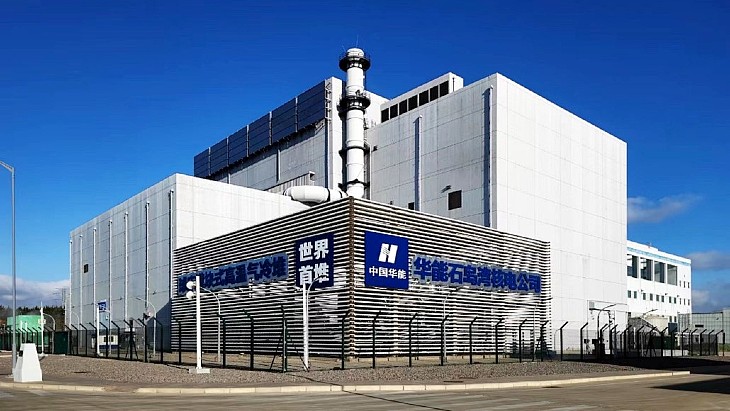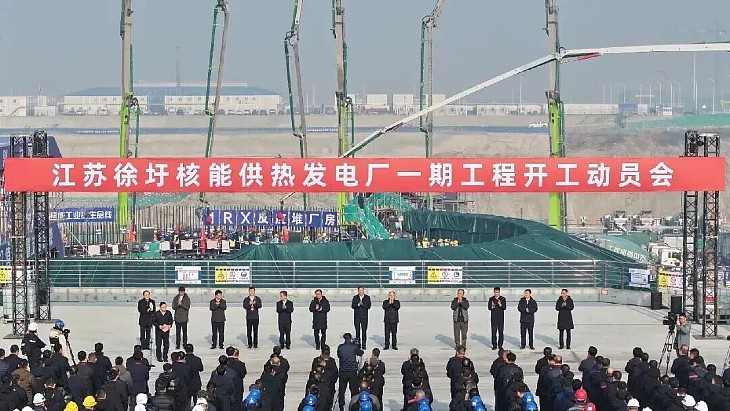It follows a successful 168-hour demonstration run for the High Temperature Gas-Cooled Reactor - Pebble-bed Module (HTR-PM) in Shidao Bay (also known as Shidaowan), in Shandong Province, which is currently operating at 2×200 MWt power.
The HTR-PM features two small reactors (each of 250 MWt) that drive a single 210 MWe steam turbine. It uses helium as coolant and graphite as the moderator. Each reactor is loaded with more than 400,000 spherical fuel elements (‘pebbles’), each 60 mm in diameter and containing 7 g of fuel enriched to 8.5%. Each pebble has an outer layer of graphite and contains some 12,000 four-layer ceramic-coated fuel particles dispersed in a graphite matrix. The fuel has high inherent safety characteristics, and has been shown to remain intact and to continue to contain radioactivity at temperatures up to 1620°C - far higher than the temperatures that would be encountered even in extreme accident situations, according to the China Nuclear Energy Association.
First concrete for the demonstration project was poured on December 2012, with the operating permit granted in August 2021 and the plant connected to the grid in December 2021. The plant has more than 2200 sets of first-of-a-kind equipment, including more than 660 sets of innovative equipment. The supporting fuel element production line has the largest production capacity in the world.
The project is a collaborative effort involving Tsinghua University as a technical leader, responsible for research and development and main components and systems design, with China Huaneng Group as the owner and operator of the plant, and China National Nuclear Coorporation as the engineering, procurement, and construction contractor and fuel manufacturer. Professor Zuoyi Zhang, director of the Institute of Nuclear and New Energy Technology at Tsinghua University, is the chief scientist and chief engineer for the project.
HTR-PM is a Generation IV nuclear energy technology and a small modular reactor. Two safety demonstration tests were conducted on the reactor modules, each at a power of 200 MWt, on 13 August and 1 September, respectively.
A Tsinghua spokesperson said: "The normal energy transfer driven by power was stopped during the tests. The measured nuclear power and temperatures within the different reactor structures, described how the reactors were naturally cooled down, without intervention of humans or emergency core cooling systems. The tests confirmed that commercial-scale reactors could be cooled down naturally without emergency core cooling systems for the first time in the world. It is the so-called inherently safe reactor.
"The major purpose of HTR-PM is to co-generate high temperature steam up to 500℃ and electricity. It is cost effective currently in the Chinese market to supply steam and electricity for the petrochemical industry to substitute the burning of natural gas and coal. This breakthrough technology is recognised to play a positive role in optimising energy structure and achieving China's 'dual carbon' goal. Several commercial projects are under preparation in China."
China's National Energy Administration, in announcing the start of commercial operation, said: "The commissioning of the demonstration project is of great significance and has a positive impact on promoting the safe development of nuclear power in our country and improving our country's nuclear power power scientific and technological innovation capabilities."
In an interview last year for World Nuclear Association's World Nuclear Performance Report 2022, Lu Hua Quan, chairman of the Nuclear Research Institute, Huaneng Company, explained: "HTRs have the highest operating temperatures of all existing reactor types, and are also the only reactors that can provide very high-temperature process heat." He said there was export potential, especially to countries and regions where freshwater resources were scarce, adding that "HTRs could in the future provide a source of high-quality high-temperature process heat for various industries, in particular those that are required to limit their carbon emissions".
The HTR-PM follows on from China's HTR-10, a 10 MWt high-temperature gas-cooled experimental reactor at Tsinghua University's Institute of Nuclear and New Energy Technology, which started up in 2000 and reached full power in 2003. Beyond the HTR-PM, China proposes a scaled-up version - HTR-PM600 - with one turbine rated at 650 MWe driven by six reactor modules.





_28178.jpg)
_66891.jpg)
_55296.jpg)





